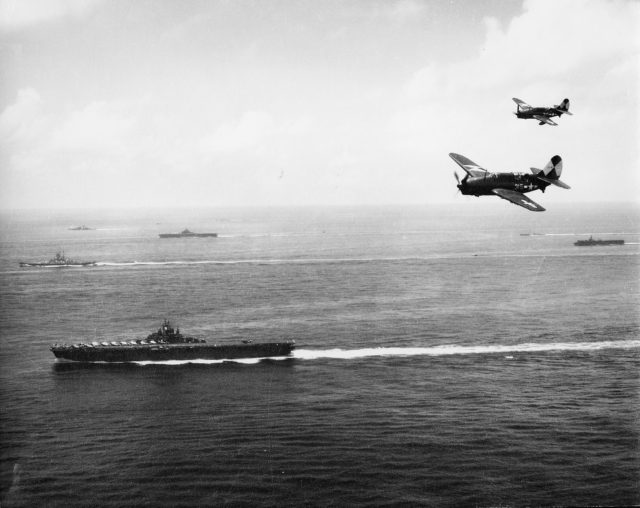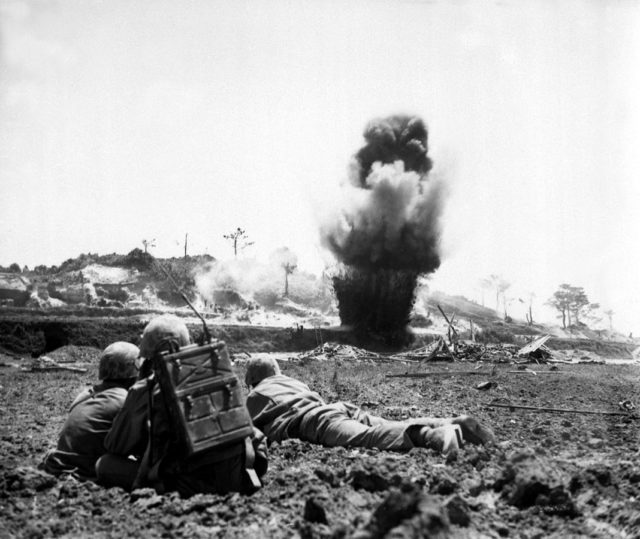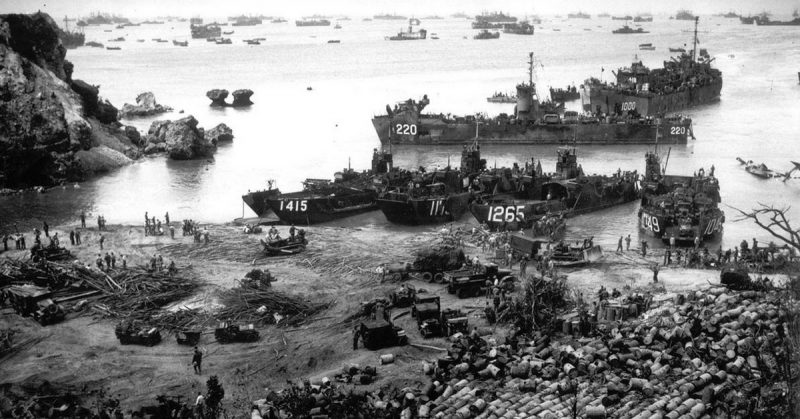In 1945 the United States Navy’s Photographic Services Branch made a movie in an attempt to encourage Americans to buy war bonds. They were so enthusiastic about it that someone actually died during the making of the film.
The Fleet That Came to Stay was directed by Budd Boetticher, although he was better known for his westerns. He had shot John Wayne’s first production when Wayne portrayed Boetticher, who had worked as a matador in Mexico. A student at the Culver Military Academy, Boetticher was the Navy’s first choice when it came to making their docu-drama-commercial.
In The Fleet That Came to Stay, the movie makers depict the US invasion of Okinawa, which had been code-named Operation Iceberg. It began on the 1st of April, 1945, and took place in the Ryukyu Islands. The main focus of the fighting was on the island of Okinawa – just 340 miles from the Japanese mainland.
It was to be the United States 10th Army’s stepping stone for conducting raids on central Japan, and offered the American military a real foothold on the Japanese territory. The 10th, therefore, had its own tactical air force – making it unique among the American troops at the time.

Officially called the Battle of Okinawa, it is also known as the “typhoon of steel” due to its ferocity – it was the bloodiest conflict in the Pacific. The Japanese soldiers knew they were losing and gave it all they had in the defense of their mainland. Depleted of vital resources, they resorted to their final, desperate weapon – their now infamous kamikaze fighters.
The 10th were not alone, of course. Along with the air force, they were supported by the Navy, which is actually where The Fleet That Came to Stay begins. The early scenes show several American GIs realizing that they are on their way to Japan, and discussing what it will look like when they get there.
Previously, kamikaze pilots had to fly great distances to crash onto US warships. The GIs now understood that they were putting themselves directly within reach of those same suicidal pilots.
The film is remarkable in how it combines actual combat footage with scripted acting in a studio. It was during the former that a US Navy photographer died during the American advance deeper into Okinawa.
Fortunately, the operation was a success. Unfortunately, it came at a terrible cost – more than 82,000 dead on both sides, including 149,425 civilians on the island (a number of whom committed suicide). Worse was still to come.

Some historians suggest that the Battle of Okinawa may have led to the US decision to use the atom bomb on Japan. The Japanese had proven they were willing to fight for every square inch of their country, and the US government wanted the war ended.
Although the Allied armies were increasingly confident that they would be able to win the war in the Pacific, there was no doubt that they would have to suffer severe casualties in the process. The United States government knew this, and they were aware that the closer their soldiers got to the Japanese capital, the worse things would get.
With this in mind, they wanted someone to produce a movie that could prepare the general public for the possibility of a high death toll during the final months of the war. It was felt that people would take the news of intense bloodshed better if they were aware of that likelihood in advance, and if it had been made clear to them that sacrifice was necessary if they were going to defeat the last of the Axis Powers.
The film was first released on the 26th of July, 1945, in New York City and it ends with an appeal to buy United States war bonds. Days later, on the 6th of August, Hiroshima became the first city in the world to be attacked with a nuclear bomb. When Japan still refused to surrender (despite losing some of its overseas territories to the Soviets on the same day), Nagasaki became the second.
With that, Japan finally surrendered, at last putting an end to the Second World War.
https://www.youtube.com/watch?v=bMD0DWkzRYI&gl=US
